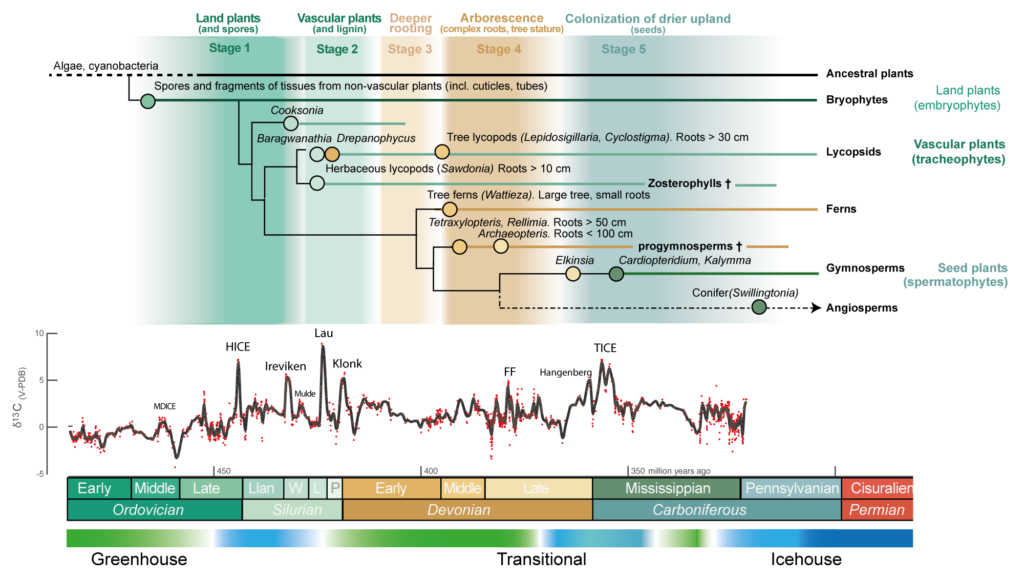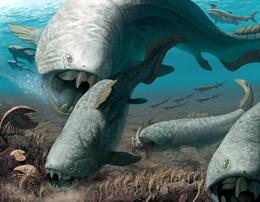The colonization of land by plants, fungi and animals has had a profound impact on Earth’s climate and oxygenation state. In a comprehensive review paper, we have summarized the current state of knowledge and compiled available evidence in support that terrestrial life has caused:
- Atmospheric CO2 decline and climatic cooling (permanent transition)
- Atmospheric O2 rise and ocean oxygenation (potentially permanent transition)
- Ocean fertilization and anoxia (temporary perturbations, ~1 Myr)

We argue that the transition occurred in five steps (see figure). Still, it is unclear when and how plants (and their companions) affected the Earth system. For example, there seems to be a mismatch in terms of when the rise of vascular plants affected atmospheric O2 and CO2 the most.

